News
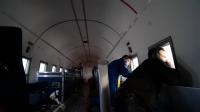
Finding Open Water in Greenland's Icy Seas
Researchers in NASA's Oceans Melting Greenland campaign release scientific probes from an airplane into the seawater along the coast of Greenland. The probes are part of a five-year effort to improve our understanding of the ocean's role in Greenland's rapid ice loss.
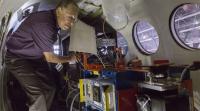
New Airborne Campaigns to Explore Snowstorms, River Deltas, Climate
Five new NASA Earth science campaigns will take to the field starting in 2020 to investigate a range of pressing research questions, from what drives intense East Coast snowfall events to the impact of small-scale ocean currents on global climate.

Mapping Record-Setting Wildfire from 65,000 Feet
The Mendocino Complex Fire is now the largest wildfire in California history with well over 350,000 acres burned. This false-color image was captured on August 9, 2018 by an instrument installed aboard a NASA research aircraft that flew over both fires making up the complex in the area around Clear Lake (the central, black feature) in northern California. Active fire zones are seen in yellow, with warm, burned areas in orange. Unburned vegetation appears in blue and green. The flames of small, active fires can be seen at the leading edges of the fire perimeter.
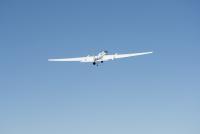
NASA Assists in Efforts to Contain California Wildfires
An effort by multiple NASA centers to assist with the California wildfires included capturing satellite data of the smoke plumes and aircraft flights over burned areas to collect information for recovery planning.
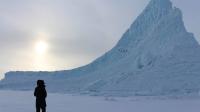
NASA Gets Up Close with Greenland's Melting Ice
With a new research plane and a new base to improve its chances of outsmarting Atlantic hurricanes, NASA's Oceans Melting Greenland campaign takes to the sky this week for its third year of gathering data on how the ocean around Greenland is melting its glaciers.
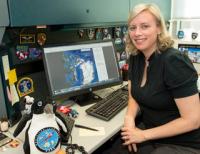
Christy Hansen - A Force of Nature
Christy Hansen plans and manages airborne science missions. She helps scientists, engineers and managers to design aircraft-based Earth science missions including milestones and budget, science requirements definition, instruments and aircraft, field logistics and deployment operations, data management, documentation and reporting.
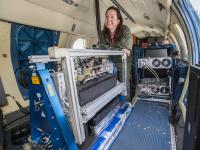
NASA Joins Effort to Sniff Out Ozone in the Northeast
A scientific investigation is looking into how ozone forms and how it's being transported around the Long Island Sound. Led by the Northeast States for Coordinated Air Use Management (NESCAUM), the Long Island Sound Tropospheric Ozone Study (LISTOS) involves researchers from state and federal agencies and academia. Two NASA centers — Langley Research Center in Hampton, Virginia, and Goddard Space Flight Center in Greenbelt, Maryland — are contributing scientists, pilots, aircraft and aircraft-based remote sensing instruments to the effort.
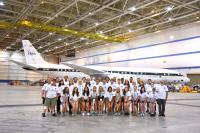
Student Airborne Research Program Celebrates Tenth Year
Twenty-eight undergraduate students are participating in an eight-week NASA airborne science program field experience designed to immerse them in the agency's Earth Science research.
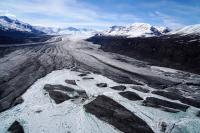
Dirty, Crevassed Glaciers in Alaska
Over the years, scientists have captured spectacular photographs while mapping ice during NASA’s Operation IceBridge mission. Many of the photographs have featured the icy landscapes of Greenland and Antarctica, over which lengthy missions are flown each year over. But the views during shorter duration IceBridge missions over Alaska reveal some equally majestic icescapes.

ACT-America: The Story So Far
A NASA airborne science study looking at the transport of two major greenhouse gases in the eastern half of the U.S. just completed its fourth and next-to-last flight campaign. By measuring how weather systems move carbon dioxide and methane, Atmospheric Carbon and Transport-America, or ACT-America, aims to improve our understanding of where the gases originate and where they're being absorbed. Flight campaigns have covered summer, fall, winter and spring. A final set of flights in 2019 will take a second look at summer, which is a particularly active time for greenhouse gas transport. In this video, ACT-America scientists talk about what the study is revealing so far, the challenges of conducting a multi-year airborne science campaign, and what they hope ACT-America's legacy will be.

Help from Above: NASA Aids Kilauea Disaster Response
On May 3, the Kilauea volcano on Hawaii’s Big Island erupted from new fissures and sent lava flowing over streets and neighborhoods. As the disaster response on the ground lead by the U.S. Geological Survey kicked into gear, managers from NASA’s Earth Science Disasters Program heard from response agencies and sent out a call to NASA’s own researchers, data managers, and satellite teams: What can we do to help?
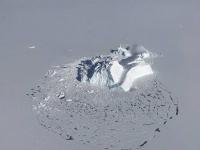
NASA Completes Survey Flights to Map Arctic Ice
Operation IceBridge, NASA’s longest-running airborne mission to monitor polar ice change, concluded this year’s springtime survey of Arctic sea and land ice.
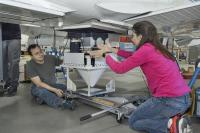
New Technology Doubles Scientists’ View of Ocean-Air Interactions
NASA scientists are hard at work trying to unlock mysteries of our planet’s ocean surface currents and winds using a new Earth science radar instrument called DopplerScatt.
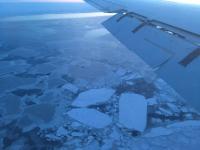
NASA's World Tour of the Atmosphere Reveals Surprises Along the Way
Since 2016, a team of scientists with 25 advanced instruments aboard NASA's DC-8 research aircraft has sampled over 400 different gases and a broad range of airborne particles on month-long excursions from Alaska down the Pacific to New Zealand, then over to South America and up the Atlantic to Greenland, and across the Arctic Ocean. Far from land, the atmosphere above the ocean is where to find the cleanest air on the planet — at least in theory. Over the course of three deployments, and with their fourth and final trek beginning in late April, the team has found surprising levels of pollutants above the Pacific, Atlantic and Arctic oceans.
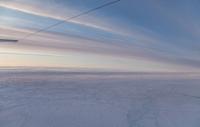
NASA Begins Latest Airborne Arctic Ice Survey
NASA completed the first IceBridge flight of its spring Arctic campaign with a survey of sea ice north of Greenland. This year marks the tenth Arctic spring campaign for IceBridge. The flights continue until April 27 extending the mission’s decade-long mapping of the fastest-changing areas of the Greenland Ice Sheet and measuring sea ice thickness across the western Arctic basin.

Taking the Pulse of Greenhouse Gases
NASA's King Air B200 aircraft was flown to test the triple-pulse Integrated Path Differential Absorption (IPDA) lidar, a first-of-its-kind instrument that measures atmospheric carbon dioxide (CO2) and water vapor (H2O).

NASA’s Longest Running Survey of Ice Shattered Records in 2017
Last year was a record-breaking one for Operation IceBridge, NASA’s aerial survey of the state of polar ice. For the first time in its nine-year history, the mission, which aims to close the gap between two NASA satellite campaigns that study changes in the height of polar ice, carried out seven field campaigns in the Arctic and Antarctic in a single year. In total, the IceBridge scientists and instruments flew over 214,000 miles, the equivalent of orbiting the Earth 8.6 times at the equator.
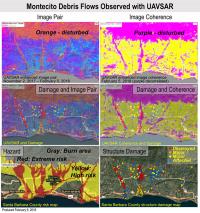
California Debris Flows Seen in Before/After Images from NASA's UAVSAR
Extreme winter rains in January 2018 following the Thomas Fire in Ventura and Santa Barbara Counties caused severe debris flows, resulting in significant loss of life and considerable property damage in the town on Montecito, just east of Santa Barbara. NASA's Uninhabited Aerial Vehicle Synthetic Aperture Radar (UAVSAR) airborne radar platform detected changes caused by the debris flows between two images acquired on Nov. 2, 2017, and Feb. 5, 2018. An enhanced image pair (top left) shows disturbed areas in orange. In areas of severe surface disruption from the fire scar and debris flows the two image pairs can't be matched and decorrelate (top right). In the middle panels, the radar images are overlaid on the structure damage map produced by the County of Santa Barbara. The fire scars and damage correspond well with the risk map (lower left) and damage map (lower right). With an operational system, products such as these have the potential to augment information available for search and rescue, and for damage assessment for government agencies or the insurance industry. Radar has the advantage of being available in all weather conditions, as it can image through clouds.
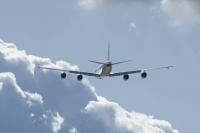
NASA Takes International Aviation Research to the ‘Max’
NASA’s ongoing research into what happens with engine performance, emissions and contrail formation when different types of fuels are used in jet engines is headed for the skies over Germany this month.

NASA Covers Wildfires from Many Sources
NASA has a fleet of research aircraft carrying the latest sensor technologies that can be used for Earth observations. NASA's ER-2 aircraft, based at Armstrong Flight Research Center (AFRC) in Palmdale, California, flies as high as 70,000 feet (21,300 meters), almost twice as high as a commercial airliner, and is used for science research missions over much of the world. In December 2017, the aircraft flew locally over California wildfire events, testing early versions of science instruments that may one day be launched into space aboard a satellite to observe our home planet Earth.
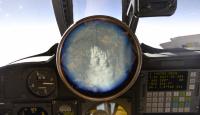
Prototype Space Sensors Take Test Ride on NASA ER-2
Scientists recently completed test flights with prototypes of potential satellite sensors over the Western United States probing basic science questions about aerosols, clouds, air quality and global ocean ecosystems.
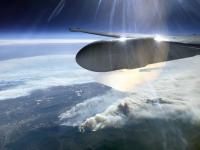
NASA ER-2 Aircraft Flies Over Thomas Fire in California
During an engineering flight test of the Cloud-Aerosol Multi-Angle Lidar (CAMAL) instrument, a view from NASA Armstrong Flight Research Center’s ER-2 aircraft shows smoke plumes, from roughly 65,000 feet, produced by the Thomas Fire in Ventura County, California, around 1 p.m. PST on Dec. 5th, 2017. As of Dec. 6, authorities state 65,000 acres have been burned and the fire remains zero percent contained.
Image Credit: NASA/Stu Broce

New Greenland Maps Show More Glaciers at Risk
New maps of Greenland’s coastal seafloor and bedrock beneath its massive ice sheet show that two to four times as many coastal glaciers are at risk of accelerated melting as previously thought.
Researchers at the University of California at Irvine (UCI), NASA and 30 other institutions have published the most comprehensive, accurate and high-resolution relief maps ever made of Greenland's bedrock and coastal seafloor. Among the many data sources incorporated into the new maps are data from NASA's Ocean Melting Greenland (OMG) campaign.
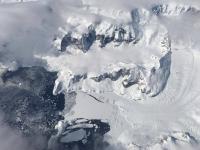
IceBridge Launches Two Sets of Antarctic Flights
Scientists with NASA’s longest-running airborne mission to map polar ice, Operation IceBridge, completed a successful science flight on Oct. 29, inaugurating their 2017 survey of Antarctic sea and land ice. For the first time in its nine years of operations in the southern hemisphere, IceBridge will launch two consecutive, dedicated sets of Antarctic flights from two continents—South America and Antarctica—with two different aircraft and instrument suites.
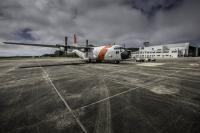
ACT-America Aims to Tell Four-Season Greenhouse Gas Story
NASA scientists are once again on the hunt for greenhouse gases in the sky. Researchers for the Atmospheric Carbon and Transport-America, or ACT-America, study returned to the field last week to measure how weather systems transport carbon dioxide and methane through the atmosphere over the eastern part of the United States.

Global Airborne Mission to Make Ozone Hole Detour
Atmospheric researchers depart this month on NASA's DC-8 research aircraft on their third survey of the global atmosphere. Taking place for the first time in Northern Hemisphere fall, the season gives them the unique opportunity to make a detour from their previous flight paths to fly underneath the Antarctic ozone hole.
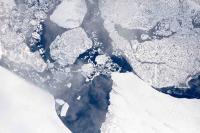
NASA Flights Map Summer Melt of Greenland Land Ice
Operation IceBridge is flying in Greenland to measure how much ice has melted over the course of the summer from the ice sheet. The flights, which began on Aug. 25 and will go on until Sept. 21, repeat paths flown this spring and aim to monitor seasonal changes in the elevation of the ice sheet.
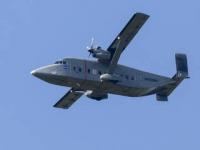
NASA Chesapeake Bay Study To Help Improve Air-Quality Forecasts
The Ozone Water-Land Environmental Transition Study (OWLETS) is a NASA study looking at ozone concentrations around the lower Chesapeake Bay.
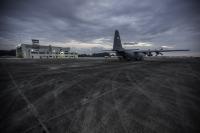
NAAMES Returns to Air and Sea to Study Plankton’s Annual Cycle
NASA’s North Atlantic Aerosols and Marine Ecosystems Study (NAAMES) returned to air and sea to research the declining, or deaccelerating, phase of the annual cycle of plankton in the North Atlantic. Since plankton form the base of the marine food web and impact the productivity of fisheries, understanding this declining phase is important to forecasting the future.

NASA Interns Complete Earth Science Summer Research Program
Thirty-two students from colleges and universities across the United States recently completed a NASA summer internship designed to provide them with an airborne Earth science research experience.
